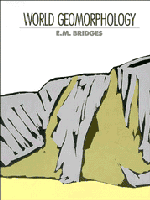6 - Asia
Published online by Cambridge University Press: 05 June 2012
Summary
Asia is the largest landmass, amounting to 44 million km2. It extends across 120° of longitude from the Urals to the Bering Straits, and from 80°N in Siberia it extends to 10°S of the Equator in Indonesia. Bounded by the Arctic Sea to the north, the Pacific Ocean to the east and the Indian Ocean to the south, it is only in the west where there is any doubt about Asia's boundaries. Traditionally, geographers have included Asia Minor, the Middle East and the Indian sub-continent in Asia. The Ural mountains have likewise been the traditional boundary between Asia and Europe. The continent of Asia includes the highest mountain, Everest (8848 m) and the lowest place on earth, the Dead Sea rift valley (— 396 m).
In view of its large size and complexity, it is proposed to discuss the geomorphology of Asia in two parts. The first part will consider the plains, plateaux and mountains of northern Asia in Siberia, China and south-east Asia. The second part will be devoted to the plateaux of India and Arabia and the fold mountains of Turkey, Iran, Afghanistan, Pakistan and India. The island arcs along the east coast of Asia are described in Chapter 9.
The presence of the high plateaux of central Asia raises the mean elevation of the landsurface of the continent to 915 m above sea level.
- Type
- Chapter
- Information
- World Geomorphology , pp. 123 - 165Publisher: Cambridge University PressPrint publication year: 1990
- 2
- Cited by

